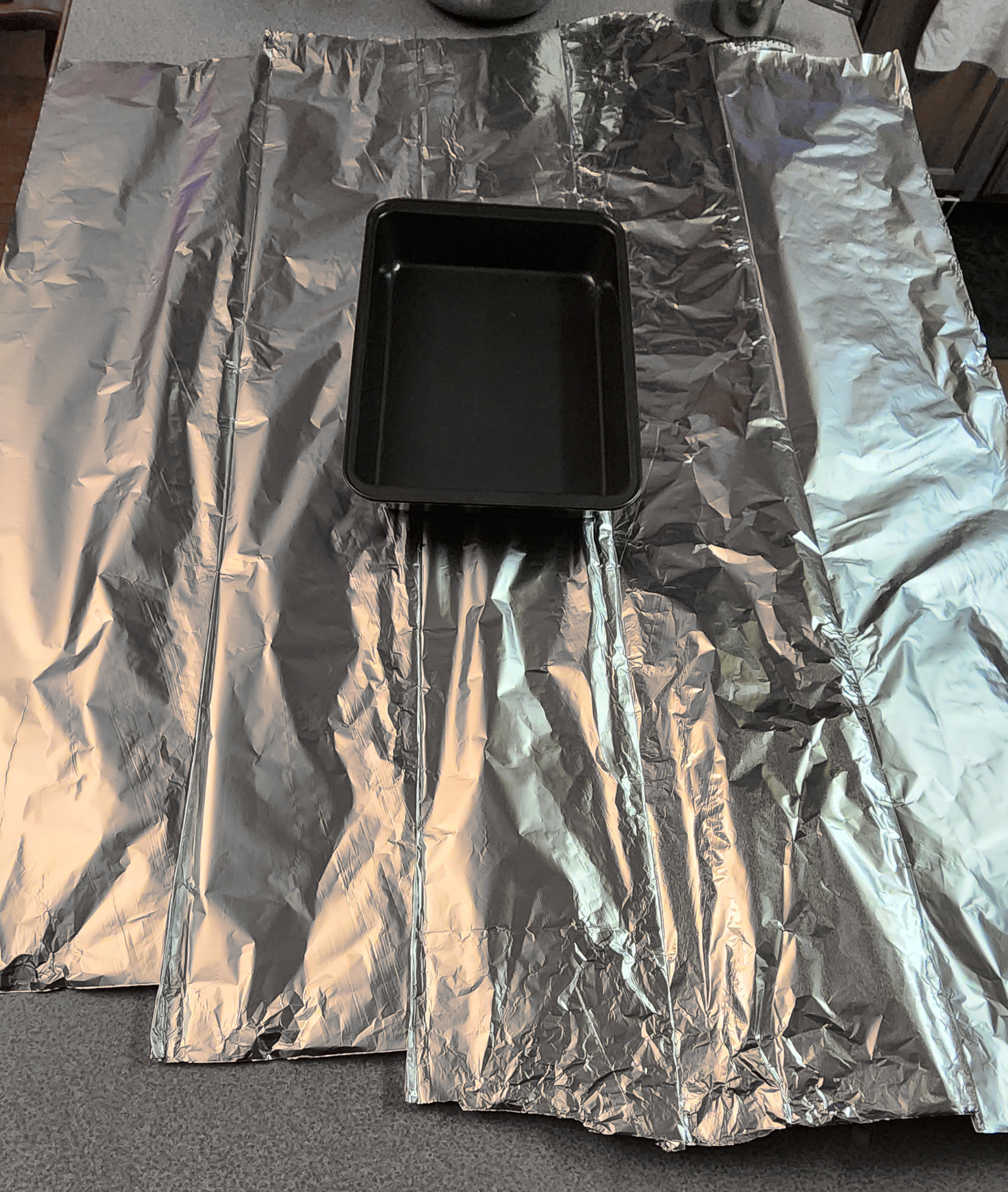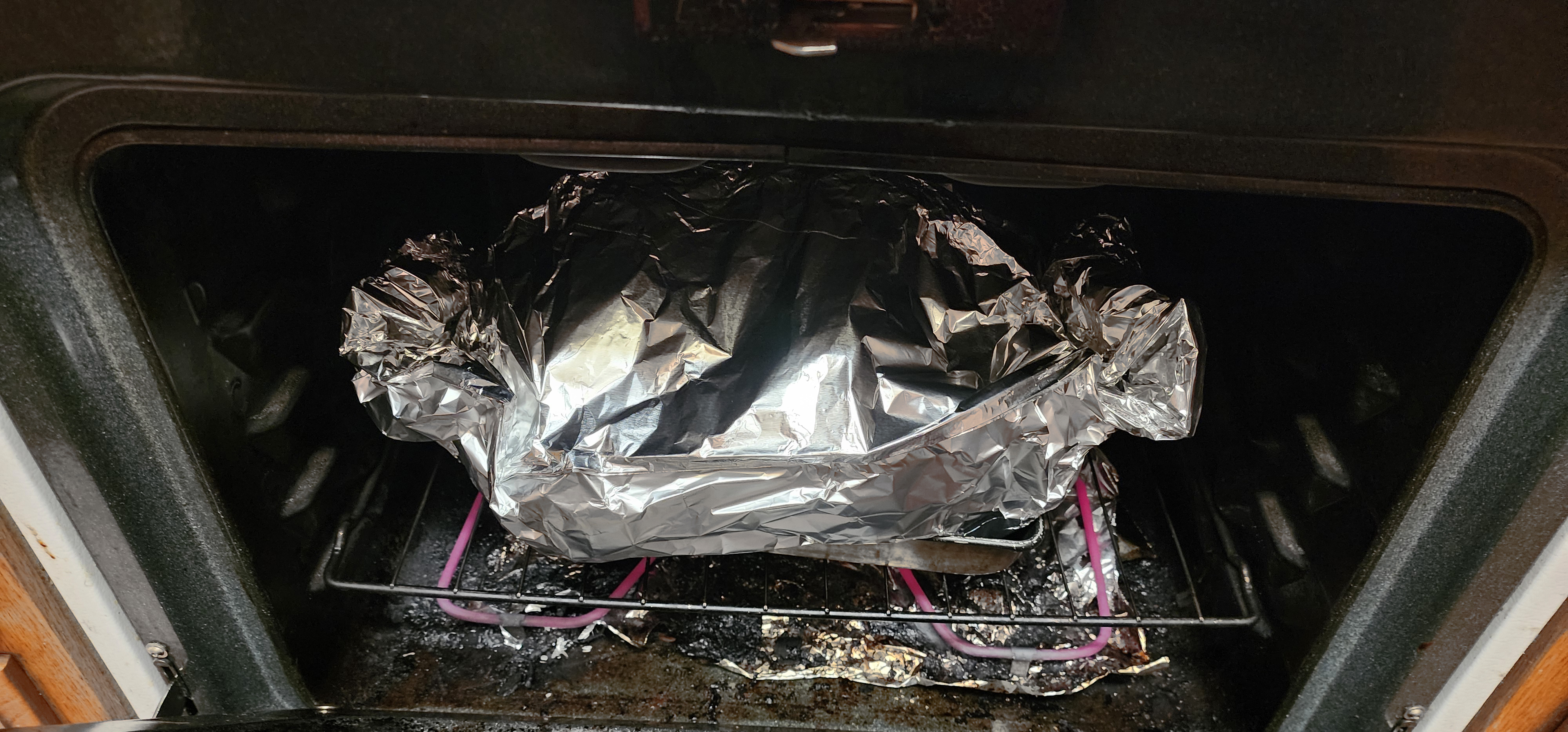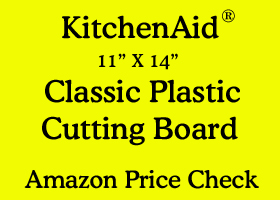 ------------
------------ ------------
------------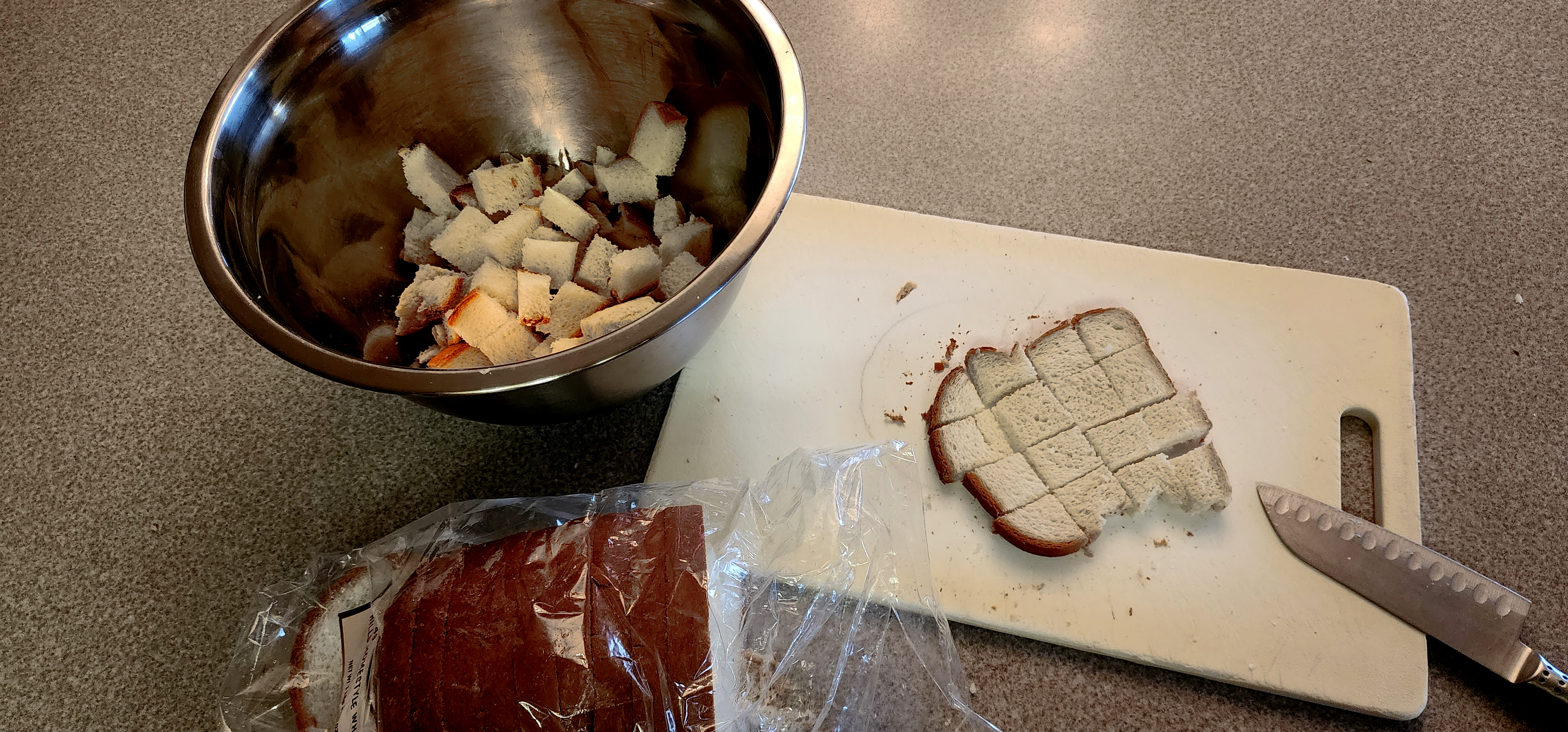
1/3 loaf of bread diced into ½" squares into a large bowl
giblets
1/8 teasp salt
¼ teasp pepper
½ teasp ground sage
2 tbs. (heaping) fresh parsley [diced fine]
½ teasp thyme
¼ teasp oregano
2 eggs
½ cups sliced mushrooms
½ cup diced onions
½ cup diced celery
¼ cup raisins
¼ cup diced apple
Boil Giblets & neck till done. Dice small. The parts that are tendon-like can be excluded. The best way to get the meat off of the neck is to scrape the neck with a fork as seen in the photo. In the mixing bowl with the bread add all diced, sliced and chopped ingredients. Add in eggs. Mix with hands. If too dry add in an extra egg. Shove into turkey.
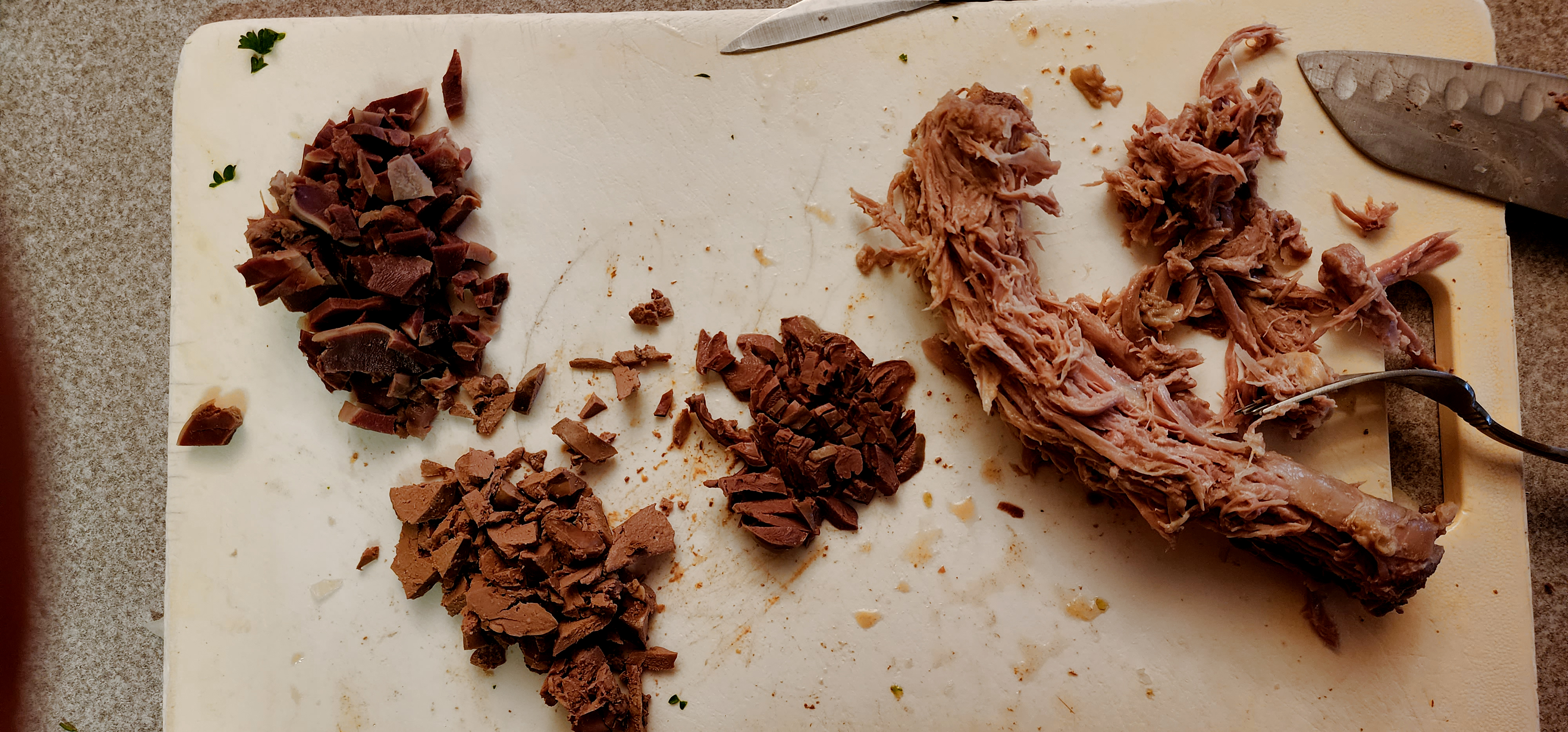
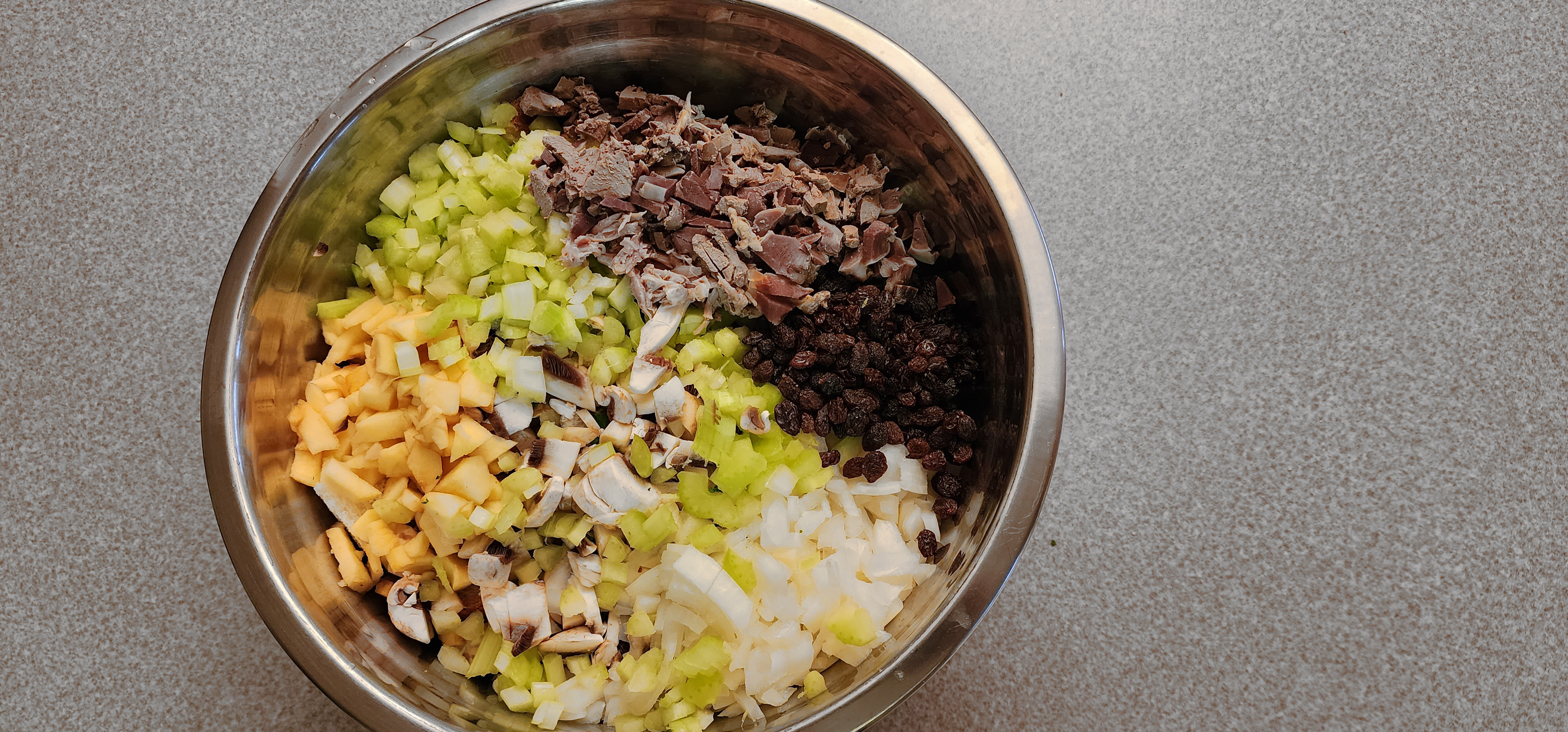

In preparing the aluminum foil to wrap the turkey we use the standard non-heavy duty 12" wide aluminum foil. In most cases you'll need 5 long sheets with each sheet being around 5' long. You might get away with each sheet length being 4' long. However, it's better to have too much than not enough. Each sheet of aluminum will need to be attached to each other with carefully made seams so as to make one wide multi-seam sheet of aluminum.
In preparing the aluminum foil first stack two sheets on top of each other and make sure the sheets are perfectly aligned. Along one edge carefully fold up one side across the entire length at about 1½" wide. See the single fold in the composite photo. Fold again along all that length to create the double fold and then once again to create the triple fold. Spread open the two sheets and lay flat. In doing so you should lose one fold in he process leaving you a "double-fold". Repeat the process again with the remaining sheets.
Once the aluminum sheets are bonded together set it on top of the cake pan then CAREFULLY work the middle of the Aluminum into a 9"X 13" cake pan such that the weight of the turkey won't tear [or break a seam of] the aluminum. We've used the 9"X 13" cake pan for every size turkey from 14 to 27 lbs.
After shoving all the stuffing into the turkey get a soft cube of butter and coat the entire skin [The excess butter will melt and mix into the gravy below]. You must carefully crinkle aluminum around the wing tips and the leg tips [as seen in the photo]. As the turkey cooks these appendages will change position and could puncture the aluminum while cooking. Cooking time is based on the weight of the turkey vs. the time in the oven. We developed this chart over a long period of time and it's pretty accurate. If your turkey is outside the weight range shown here you can extrapolate.
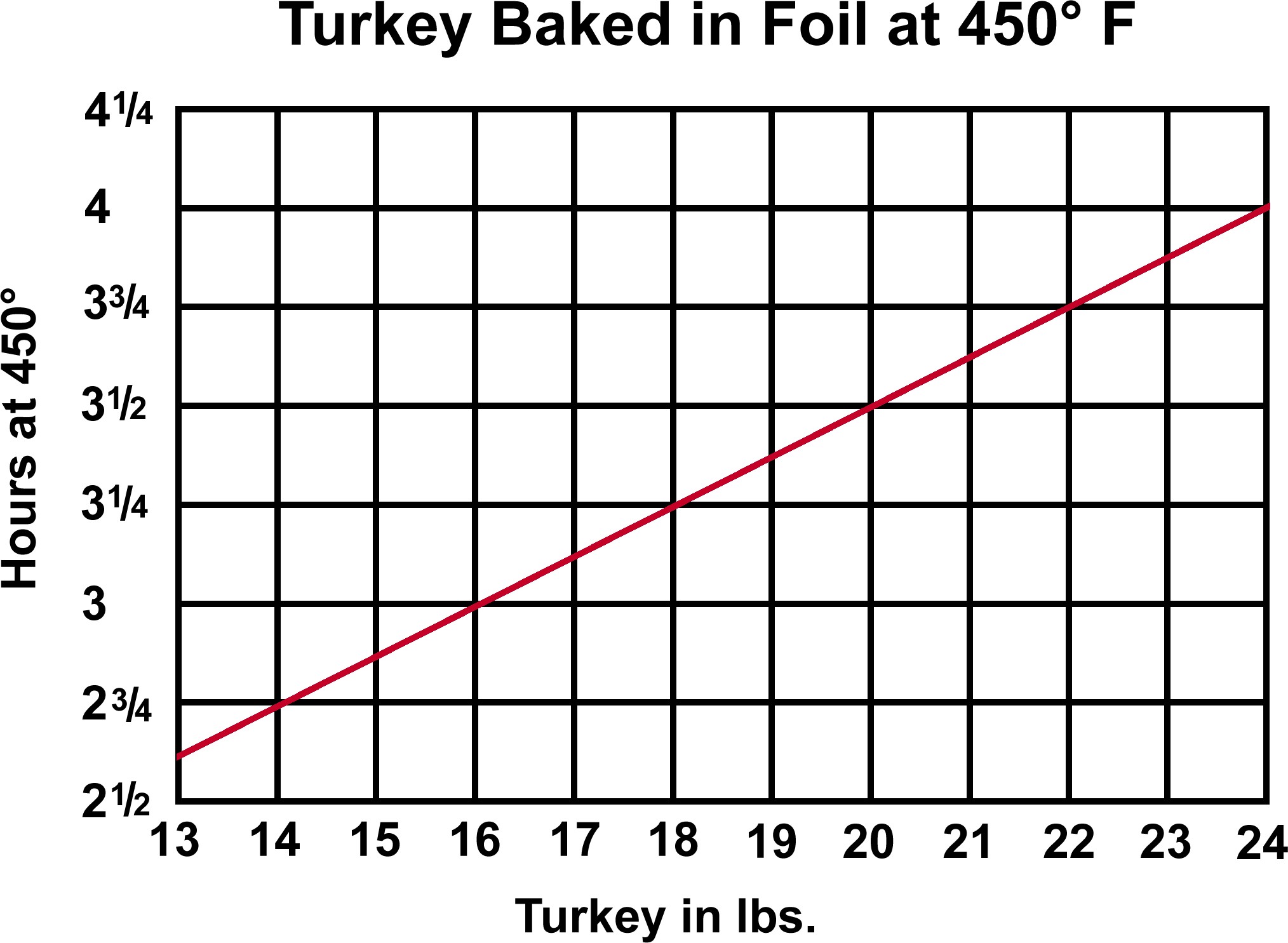
The turkey in the photo was 24½ lbs. If you get a turkey much bigger than that the then it would be wise to bond 6 aluminum sheets toether since he final seam needs to be made across he top of the turkey and you need enough to work with. After creating the seam across the top the ends need to be tightly rolled up against each side of the turkey. If you accidently puncure the aluminum you'll need to start all over from scratch. Any hole will cause the turkey to dry out in the 450ºF heat.
Once the turkey is cooked get a second person to help you pour out the liquid from the botton of the turkey. This will be tricky and can be prone to accidents. You'll need 4 hot pads. Puncture the aluminum a little above the lip of a corner of the cake pan and make a crude make-shift spout. Lift and tilt the turkey so as to pour out the majority of the liquid into a saucepan. Have a glass ready with about 1/3 cup of flour mixed well, using a fork, with about 1¼ cups cold water. Put the sauce pan on a hot burner and slowly pour the flour/water mixture in while stirring vigorously. This is your gravy.
As you slice into the breast of the turkey you'll immediately note juices dribbling out the sides of the white meat as you slice through it. It'll be that moist. Don't expect the skin to be dark brown as is the case with traditional methods of cooking a turkey. Here, you are going for taste and not looks!
